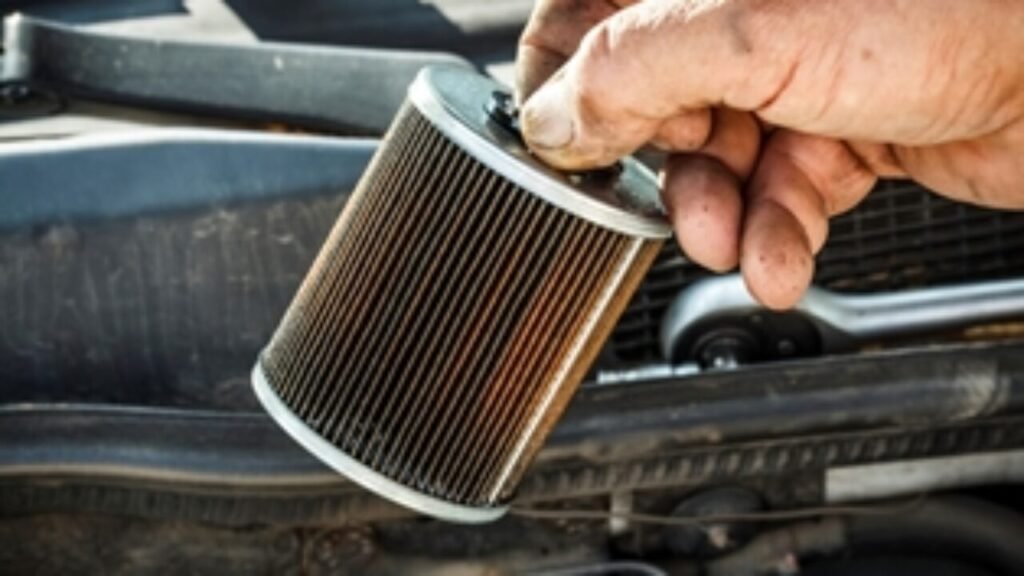When the time comes to replace your auto’s fuel filter, it is an auto repair that needs to get taken care of before it leads to other complications. Lucky for you, this is one of the auto repairs that can be safely handled by a home mechanic. A beginner in auto repair can follow these instructions to safely and correctly remove an old fuel filter and get the new fuel filter installed in no time at all. If you’re not mechanically inclined or you just can’t find the time, you’ll probably need to head in to the auto service shop. For those ready to embark on a DIY auto repair adventure, let’s get started!
The fuel filter is a component that may not cost a lot, but protects your car’s engine from what can become very costly auto repairs if you simply change it on a regular schedule. Bad fuel filters can and will lead to problems with your carburetor and fuel injection system.
Fuel Filter Replacement
First off, you will need the basics: open end wrenches or the special fuel line wrench if required, some work rags, safety glasses or other protective eye wear, a flat head screwdriver, and of course, your new fuel filter and the new fuel line washers.
The first and most important step is to relieve the fuel system pressure. It is imperative that you follow all instructions in this step completely due to the safety concerns in this step. Failure to follow directions on this step CAN result in bodily injuries as well as auto damages.
The engine should be completely cooled before attempting to start this type of auto repair. Wearing your protective eye wear, you will need to relieve the pressure in fuel system. Your fuel injection system functions under extremely high pressure. You should NEVER attempt to unscrew fuel lines or start to change a fuel filter without relieving this pressure, as doing so could create an explosion.
The first step in relieving the fuel system pressure is to find the fuel pump fuse within the auto’s fuse box. If you do not have a fuse for this, there will be a relay that controls your fuel pump. Once you have found it, start your car or truck. While still running, remove the fuse or relay that you identified. If it is the correct fuse or relay your engine should die pretty quick. Because this was done while running, the engine has used all of the highly pressurized fuel from the system. Now you can safely disconnect your fuel filter fittings without dangers from built up pressure.
How to Disconnect Fuel Lines from the Fuel Filter:
Most cars have fuel injection, so you will need two open end wrenches sized for your fuel filter fittings. Usually these will be different sizes. Some cars may require a special fuel line wrench in order to disconnect the lines. Get the wrenches in the proper position and place a work rag over the fitting. This is a second layer of protection between you and the fuel lines in the event there is a small amount of pressure left in the lines.
With the wrench on the filter itself held still, turn the other wrench counter-clockwise. Keep turning until the special bolt in the banjo fitting comes free. Now you can slip the fuel line off of the bolt. Be sure to set the bolt aside where it will not be lost or misplaced when you need it again. At this point you will do this step again for the other side of your fuel filter.
Removing your Old Fuel Filter:
Now that your fuel lines have been disconnected, you are ready to get the old fuel filter out. Remember that the fuel filter will likely be filled with gasoline. Be very careful as you remove the old filter to minimize spillage of the gas. To remove the filter, use the flat head screwdriver to release the clamp holding it in place.
Change Your Fuel Filter Washers:
Going back you the special bolts you removed from the fuel line fitting, you will have to locate the special pressure washer that should be sitting on them. These special washers are usually either aluminum or copper. Simply remove the old washers, replacing them with the new fuel filter washers you purchased. Remember that these washers are generally different from one side of the filter to the other. One of the washers will be set in place before you slip the fuel line back on, the other one will be after.
New Fuel Filter Installation:
Getting the new fuel filter in is as simple as it was to remove. Just work in reverse, reattaching the clamp with the flat head screwdriver and then reattaching each of the fuel lines. Once things are all back together, be sure you replace the fuel pump fuse or relay that you took out. The car will not start without that fuse or relay in place.
And that is it! You’re done! With a brand new fuel filter in place and better gas mileage in your future, you’re back on the road and ready to roll!

